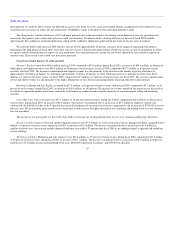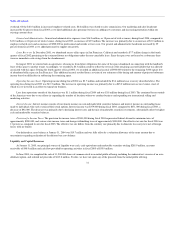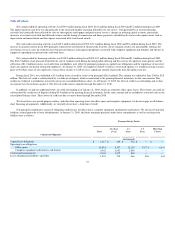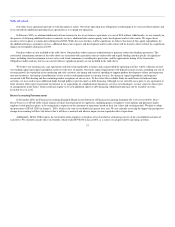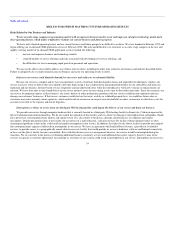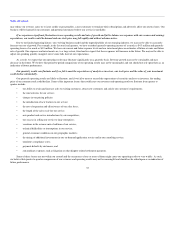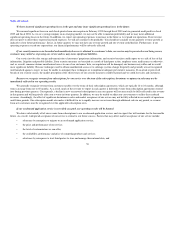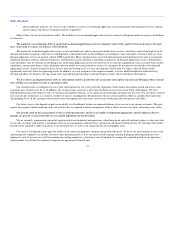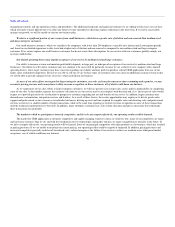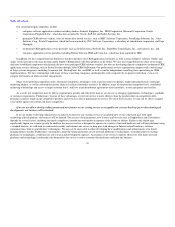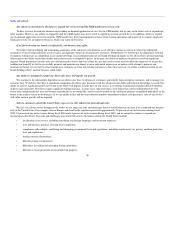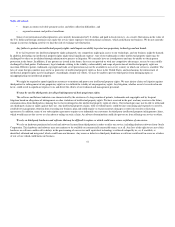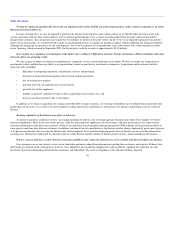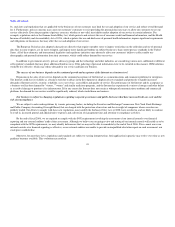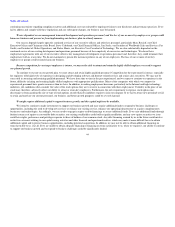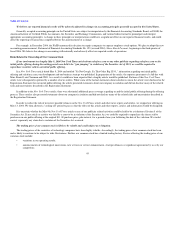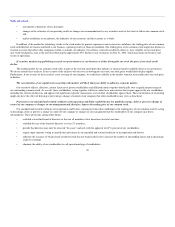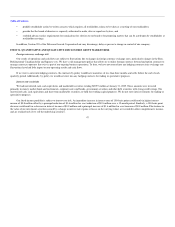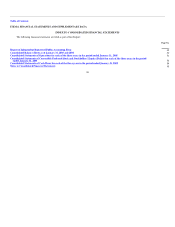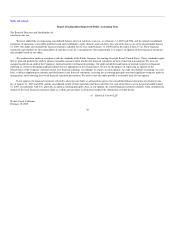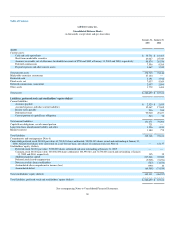Salesforce.com 2004 Annual Report Download - page 44
Download and view the complete annual report
Please find page 44 of the 2004 Salesforce.com annual report below. You can navigate through the pages in the report by either clicking on the pages listed below, or by using the keyword search tool below to find specific information within the annual report.
Table of Contents
Any efforts we may make in the future to expand our service beyond the CRM market may not succeed.
To date, we have focused our business on providing on-demand application services for the CRM market, but we may in the future seek to expand into
other markets. However, any efforts to expand beyond the CRM market may never result in significant revenue growth for us. In addition, efforts to expand
our on-demand application service beyond the CRM market may divert management resources from existing operations and require us to commit significant
financial resources to an unproven business, which may harm our business.
If we fail to develop our brand cost-effectively, our business may suffer.
We believe that developing and maintaining awareness of the salesforce.com brand in a cost-effective manner is critical to achieving widespread
acceptance of our existing and future services and is an important element in attracting new customers. Furthermore, we believe that the importance of brand
recognition will increase as competition in our market develops. Successful promotion of our brand will depend largely on the effectiveness of our marketing
efforts and on our ability to provide reliable and useful services at competitive prices. In the past, our efforts to build our brand have involved significant
expense. Brand promotion activities may not yield increased revenue, and even if they do, any increased revenue may not offset the expenses we incurred in
building our brand. If we fail to successfully promote and maintain our brand, or incur substantial expenses in an unsuccessful attempt to promote and
maintain our brand, we may fail to attract enough new customers or retain our existing customers to the extent necessary to realize a sufficient return on our
brand-building efforts, and our business could suffer.
Any failure to adequately expand our direct sales force will impede our growth.
We continue to be substantially dependent on our direct sales force to obtain new customers, particularly large enterprise customers, and to manage our
customer base. We believe that there is significant competition for direct sales personnel with the advanced sales skills and technical knowledge we need. Our
ability to achieve significant growth in revenue in the future will depend, in large part, on our success in recruiting, training and retaining sufficient numbers
of direct sales personnel. New hires require significant training and may, in some cases, take more than a year before they achieve full productivity. Our
recent hires and planned hires may not become as productive as we would like, and we may be unable to hire sufficient numbers of qualified individuals in the
future in the markets where we do business. If we are unable to hire and develop sufficient numbers of productive direct sales personnel, sales of our service
will suffer and our growth will be impeded.
Sales to customers outside the United States expose us to risks inherent in international sales.
Because we sell our service throughout the world, we are subject to risks and challenges that we would otherwise not face if we conducted our business
only in the United States. For example, sales in Europe and Asia Pacific together represented approximately 20 percent of our total revenues during fiscal
2005, 18 percent of our total revenues during fiscal 2004 and 14 percent of total revenues during fiscal 2003, and we intend to continue to expand our
international sales efforts. The risks and challenges associated with sales to customers outside the United States include:
• localization of our service, including translation into foreign languages and associated expenses;
• laws and business practices favoring local competitors;
• compliance with multiple, conflicting and changing governmental laws and regulations, including employment, tax, privacy and data protection
laws and regulations;
• foreign currency fluctuations;
• different pricing environments;
• difficulties in staffing and managing foreign operations;
• different or lesser protection of our intellectual property;
40


